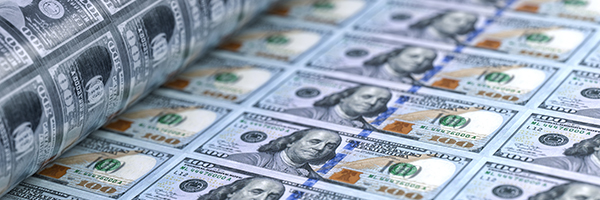Morning Briefing

February 9, 2024 | Daily JAM, Mid Term, Morning Briefing |
As I wrote a few days ago in my post “Was the Meta Platform 20% pop the market top? An important sign, yes,, but not for the reasons you think” I do think this stock market rally is putting in a top.
But I’m not worried that we’re looking at a reply of the Dot-Com crash and Bear Market that took the NASDAQ Composite down 40% in 2000 after that tech-heavy index gained more than 85% in 1999.
Why not? Let me count the ways. I get to four.

February 8, 2024 | Daily JAM, Morning Briefing |
The news pointing to serious trouble in China’s economy–the kind that can’t be fixed by replacing market regulators in Beijing–keeps on coming. If you’re looking for “something” that could upset the global apple cart in 2004, keep your eye on China. The country’s market is big enough to matter for just about every company doing business internationally, and China is a key market for companies ranging from Tesla and Apple to Starbucks and Yum Brands. So the news today from the National Bureau of Statistics showing another big drop in consume prices–in this case not good news on inflation but a signal of sluggish domestic demand–worries me.

February 7, 2024 | Daily JAM, Long Term, Morning Briefing |
The United States is on a pace to add nearly $19 trillion to its national debt over the next decade, according to a new report from the Congressional Budget Office released today, Wednesday, February 7. The budget office projected that the annual deficit will grow to $2.6 trillion in 2034 from $1.6 trillion this year, adding $18.9 trillion to the national debt during the decade. By then, the debt is projected to surpass $54 trillion.

February 6, 2024 | Daily JAM, Mid Term, Morning Briefing |
I think we’re seeing stocks put in a top. Not immediate–I think we’ve got the impending Federal Reserve interest rate cuts to help stretch out this rally into a sideways move. But the signs are there. And the most important signs aren’t the “overvaluation” of the Magnificent 7 stocks or the narrow leadership in this market. (More on why this top isn’t likely to lead to a Bear Market in tomorrow’s post “Why this isn’t 1999.) Nope. To me the most important sign if the big announcement from Meta Platforms (META) of a $50 billion stock buy back and the initiation of 50 cents a share dividend, the company’s first.

February 5, 2024 | Daily JAM, Mid Term, Morning Briefing |
Maybe you can’t remember when the yield on the benchark 10-year Treasury fell through 4% and looked headed to 3.5%. It might be hard to remember because it was so long ago. Like two weeks. Today the yield on the 10-year Treasury completed a round trip, rising 14 basis points this morning to 4.16%.

February 4, 2024 | Daily JAM, Morning Briefing |
I expect a relatively boring, week. With no fireworks from the Federal Reserve. Almost no economic data. No jobs surprises. And no earnings news from the Magnificent Sever stocks. Just old fashioned block and tackling to see if any other stocks can join the Momentum Parade.

February 2, 2024 | Daily JAM, Morning Briefing, Short Term |
I think you can kiss goodbye to the idea that the Federal Reserve will begin cutting interest rates with its march 20 meeting. Today, the Bureau of Labor Statistics reported that the U.S. economy added 353,000 jobs in January. The statisticians also revised upward the job totals for December and November. The unemployment rate held at 3.7%. Hourly wages accelerated from a month earlier, increasing by the most since March 2022. Economists surveyed by Bloomberg wee looking for the economy to add 185,000 jobs in January.

February 1, 2024 | Daily JAM, Morning Briefing, Short Term |
A day before the January jobs report that everyone on Wall Street is awaiting with bated breath two other reports painted a conflicting picture of how the U.S. economy is doing. And just in case you’ve forgotten the strength and speed of economic growth is what will determine when the Federal Reserve first cuts interest rates and how many cuts investors will see in 2024.

January 31, 2024 | Daily JAM, Mid Term, Morning Briefing |
The Federal Reserve maintained its benchmark interest rate on Wednesday in a range of 5.25%-5.50%–as the financial markets expected. But the central bank pushed back more strongly than financial markets hoped on a March 20 schedule for the first cut in rates. “The Committee does not expect it will be appropriate to reduce the target range until it has gained greater confidence that inflation is moving sustainably toward 2%,” the Fed said in its policy statement.Fed chair Jerome Powell pushed back even moe strongly in his Wednesday press conference pushed back: A march cut is “probably not the most likely case or what we’d call the base case,” he said. “I don’t think it’s likely the Committee will reach a level of confidence by the time of the March meeting to identify March as the time to [cut rates].”

January 30, 2024 | Daily JAM, Jubak Picks, Morning Briefing, MSFT, Top 50 Stocks |
It is perhaps too early to draw meaningful conclusions, but Microsoft’s failure to jump in after-hours trading on better than expected earnings sure seems like more evidence that this is a market priced to perfection.

January 29, 2024 | Daily JAM, Morning Briefing |
Just days before the U.S. Treasury Department announces how much money it intends to borrow in the next quarter, the Treasury surprised traders by cutting its quarterly borrowing estimate to $760 billion. (Yeah, that would be a reduction from what had been expected.) The reduction fueled expectations on Wall Street that the Treasury would announce one last increase to its sales of long-term debt this week. That would be welcome relief after quarters when the size of Treasury auctions tested buyers’ appetites for government debt.

January 27, 2024 | AAPL, Daily JAM, Mid Term, Morning Briefing |
It’s a Federal Reserve meeting week, but I expect Apple’s (AAPL) earnings report for its December quarter to be the big event of the week. With the potential to move the tech sector and the market.














